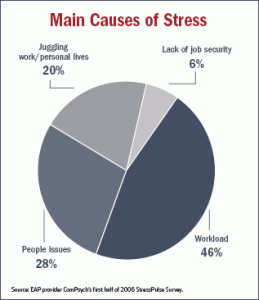“Pressure pushing down on me, Pressing down on you.”
You may recognize those lyrics from the famous Queen and David Bowie song called Under Pressure. No doubt, this song calls to mind the realization of stress and fear in life. Fear of failure, fear of pain, fear of rejection and more are landing people every day in depressive mindsets. But what many people fail to realize is that this depth of pressure stretches across social class, up to the most distinguished leaders of organizations. And the pressure is so high, it can be life threatening.
Corporate Suicide A Real Threat in High-Stakes Environment, published by the Huffington Post, reported the recent suicide of two top executives in Switzerland. These men aren’t the first to end their lives as a result of cracking under deadly stress. The Most High Profile Executive Suicides of Recent Years, published by Business Insider, lists several executives who took their lives in recent times.
Studies show that job related stress has been on the rise. A chart published by The American Institute of Stress clearly depicts the leading causes of job stress, which correlates strikingly well with our perceived leading causes of Executive suicides. We’ve set out to prove some of these correlations below.
Proposed Leading Causes of Executive Suicides:
1. Lack of Work Life Balance
The workplace stress chart above shows that 20% of job stress stems from juggling work and personal life. This is highly applicable when studies reveal executives on average are working ten hours a day in the office, plus thirty minutes every night from home, as well as an additional thirty minutes on the weekends, how is there time for incorporating people and tasks that would bring them happiness?
Carsten Scholter, former Chief Executive of Swisscom who took his own life, was working and living in Switzerland, while his family remained in Germany. Before his demise, he expressed regret that his relationship with his three children was distant. The state of his marriage was also failing. Ironically this struggle mirrors another lyric from the classic Under Pressure song: “Splits a family in two.”
2. Poor Relationship Management.
This falls under the category of people issues, which The American Institute of Stress designates to be responsible for 28% of job stress. Bullying has been a big topic when it comes to schools and child development, but what about in the workplace? Unfortunately, bullying, job derailment, jealousy, personality clashes and other conflicts are alive and kicking people to the curb in the workplace.
Finance Chief of Zurich Insurance, Pierre Wauthier, who also took his own life, specifically cited his boss, Josef Ackermann, in his suicide note, who he claimed was putting undue stress on him. Zurich Insurance is now conducting investigations into Wauthier’s claims (Reuters).
Worst of all, this kind of tragic situation could have been prevented. These scenarios should teach companies and leaders the value of implementing conflict resolution coaching, emotional intelligence training and effective wellness programs, all of which could act as early prevention measures. The tragic loss of Wauthier’s life was the result of accumulated stress, and neglecting to address real people issues.
3. Sky Rocketing Performance Expectations.
The chart above attributes 46% of work related stress to workload (that’s almost half). It’s the huge elephant in the room that can only be ignored for so long. With the struggling economy, has come increased competition for jobs, and performing the duties of multiple positions. Longer hours and increased responsibilities have become the norm.
There are instances of sleep deprivation as a leading cause of death. Recently, Merrill Lynch said Bank of America will be reviewing working conditions for employees after 21-year-old intern Moritz Erhardt died due to working 72 hours without sleep. From Interns to Executives, workload can literally become a life and death issue.
4. CEO Terminations.
It may only account for 6% of job related stress, but no one is exempt from the concern of job security. One Korn/Ferry Institute study shows that 40% of CEOs fail within their first 18 months. If that’s not high pressure than what is? The same study found that 48 percent of 262 participants were terminated from senior level positions within their first year on the job. Unfortunately, many leaders are caught in this net of statics but don’t know how to wiggle their way out. As we wrote about in Dig Deeper to Avoid CEO Terminations, both organizations and Executives can take action to help improve chances of success and reduce stress.
The world can be one giant web of difficult decisions, especially if you’re in charge of a business. Stakes are high, but shouldn’t cost anyone their livelihood. It is disheartening to see good people crumble due to lack of real attention to a very real problem. There is a great drive in our culture toward doing. But as human beings, our livelihood depends to a great extent on “being.” Following a race is exciting, thrilling, and if you are aiming to become excellent at what you do or what you provide, it is certainly a process. However, stopping to get guidance and training, for doing it more effectively, avoids burnouts and prevents tragic outcomes. Hopefully, the losses we have already discussed will not be in vain. The process of discovery to of the root of any trouble, not only lifts a huge burden, but sheds a positive light in to problem-solving. It is up to both leaders and organizations to discover and implement change. The threshold for everyone is different, if you find yourself “Under Pressure”, don’t try to conform, your truth is your responsibility.







